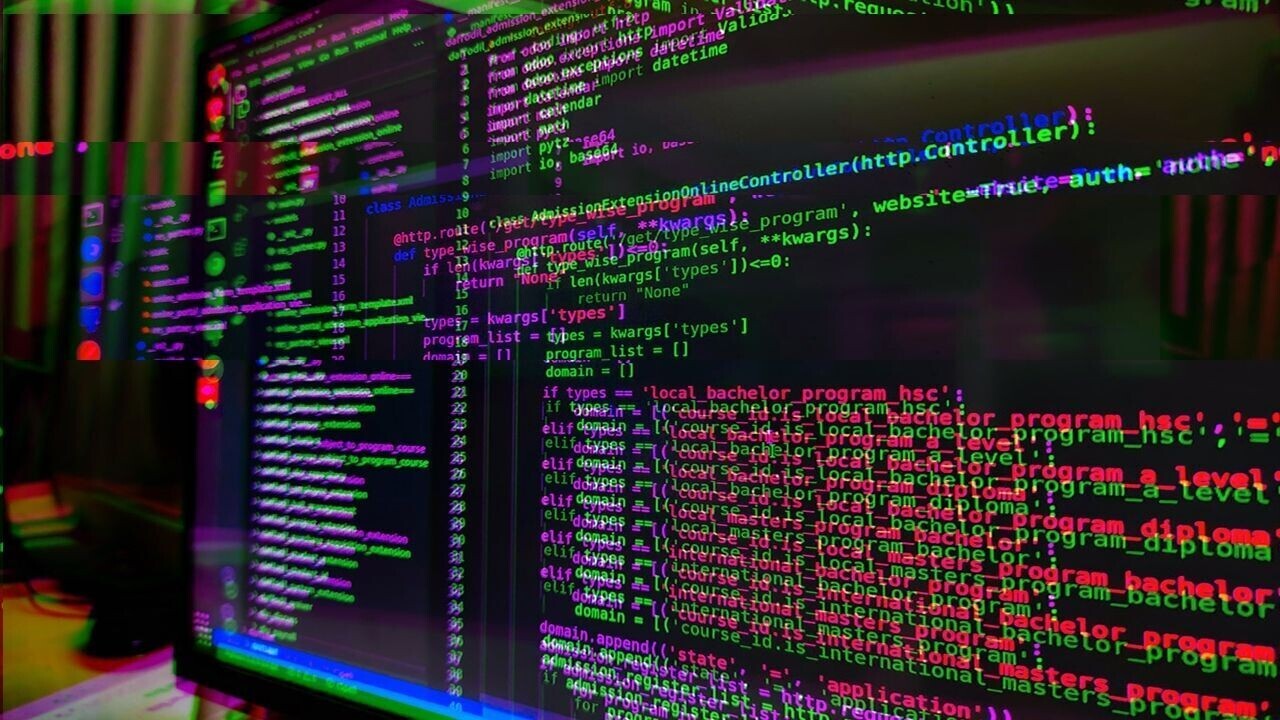
Title: 20 Code Facts
Are you ready to dive into the fascinating world of coding? Whether you're a seasoned developer, a tech enthusiast, or someone curious about the backbone of the digital age, this article is your gateway to discovering 20 intriguing facts about coding. From the historical roots of programming languages to the impact of coding on everyday life, each fact will unravel a new layer of insight into this dynamic field. Get ready to explore the evolution of coding, the power of algorithms, and the endless possibilities that stem from lines of code. Let's embark on a journey that will shed light on the past, present, and future of coding, revealing the hidden gems and exciting revelations that make this domain so captivating. So, buckle up and prepare to be amazed by the wonders of coding that shape the digital landscape we navigate every day.
Key Takeaways:
- JavaScript was created in just 10 days, yet it became one of the most popular programming languages for web development, bringing interactive experiences to the internet.
- The history of computer science is filled with fascinating moments, from the first computer bug being an actual insect to the naming inspiration behind Python. These facts showcase the remarkable progress in coding and computing.
Code
JavaScript was created in 10 days.
In 1995, JavaScript was developed by Brendan Eich in just 10 days. Despite its rapid creation, JavaScript has become one of the most widely used programming languages for web development, enabling interactive and dynamic user experiences on the internet.
Code
Python is named after Monty Python.
Guido van Rossum, the creator of Python, named the language after the British comedy group Monty Python. This reflects the lighthearted and humorous approach to programming that Python is known for.
Code
The first computer bug was an actual insect.
In 1947, the term "bug" was coined when a moth caused a malfunction in the Harvard Mark II computer. This event led to the use of the term "debugging" to describe the process of fixing coding errors.
Code
HTML was originally designed for sharing physics documents.
Tim Berners-Lee created HTML (Hypertext Markup Language) with the initial purpose of sharing physics research documents among scientists. Today, HTML is the standard language for creating web pages and applications.
Code
The first computer virus was created in the 1980s.
In 1983, Fred Cohen developed the first computer virus as part of his research. This marked the beginning of a new era in cybersecurity, prompting the need for antivirus software and heightened awareness of digital threats.
Code
The term "debugging" originated from removing a moth from a computer.
When a moth caused a malfunction in the Harvard Mark II computer in 1947, technicians "debugged" the system by removing the insect. This incident gave rise to the widely used term for fixing coding errors.
Code
The first high-level programming language was Fortran.
Developed in the 1950s, Fortran (short for "Formula Translation") was the first high-level programming language. It revolutionized the field of software development by allowing programmers to write code using English-like commands.
Code
The concept of the World Wide Web was proposed in 1989.
Tim Berners-Lee introduced the concept of the World Wide Web in 1989 while working at CERN. This laid the foundation for the modern internet and transformed the way information is accessed and shared globally.
Code
The first computer mouse was made of wood.
In 1964, Douglas Engelbart invented the first computer mouse, which was constructed from wood. This groundbreaking input device has since evolved into various designs and remains an essential tool for navigating digital interfaces.
Code
The term "spam" originated from a Monty Python sketch.
The use of "spam" to refer to unsolicited emails and messages originated from a Monty Python sketch featuring the word repeated excessively. This association led to the term being used in the context of unwanted digital communication.
Code
The first computer programmer was Ada Lovelace.
Ada Lovelace, an English mathematician, is recognized as the world's first computer programmer. Her work on Charles Babbage's early mechanical general-purpose computer laid the groundwork for modern programming.
Code
The first computer game was created in 1961.
Spacewar!, the first digital computer game, was developed in 1961 by Steve Russell and others at the Massachusetts Institute of Technology. This marked the beginning of the video game industry.
Code
The first electronic digital computer was the Atanasoff-Berry Computer.
In the late 1930s and early 1940s, John Atanasoff and Clifford Berry developed the Atanasoff-Berry Computer, which was the first electronic digital computer. This innovation paved the way for modern computing technology.
Code
The first domain name ever registered was symbolics.com.
In 1985, symbolics.com became the first registered domain name on the internet. This milestone marked the beginning of the domain naming system that is integral to the functioning of the web.
Code
The concept of cloud computing dates back to the 1960s.
The idea of cloud computing can be traced back to the 1960s when the concept of an "intergalactic computer network" was proposed by J.C.R. Licklider. This vision laid the groundwork for the cloud-based services we use today.
Code
The first computer to run a stored program was the Manchester Baby.
In 1948, the Manchester Baby, also known as the Small-Scale Experimental Machine, became the first computer to run a stored program, marking a significant advancement in computing history.
Code
The first computer hard disk drive was the IBM 350.
Introduced in 1956, the IBM 350 was the first commercial computer hard disk drive. It revolutionized data storage by offering a large capacity compared to existing storage methods.
Code
The first computer with a graphical user interface was the Xerox Alto.
Developed in 1973, the Xerox Alto was the first computer to feature a graphical user interface, including windows, icons, and a mouse. This pioneering design influenced the development of future personal computers.
Code
The first computer to defeat a reigning world chess champion was Deep Blue.
In 1997, IBM's Deep Blue computer defeated Garry Kasparov, the reigning world chess champion at the time, marking a significant milestone in the advancement of artificial intelligence and computing capabilities.
Code
The first computer to use transistors instead of vacuum tubes was the UNIVAC 1101.
The UNIVAC 1101, introduced in 1952, was the first computer to utilize transistors instead of vacuum tubes, leading to improved performance and reliability in early computing systems.
The "20 Code Facts" showcase the fascinating and diverse history of computer science and technology. From the rapid creation of JavaScript to the naming inspiration behind Python, these facts highlight the ingenuity, innovation, and evolution of coding and computing. As technology continues to advance, these foundational moments serve as reminders of the remarkable progress made in the world of programming and digital innovation.
Conclusion
In conclusion, these 20 fascinating code facts shed light on the intricate world of technology and programming. From the origins of the first programming language to the staggering number of lines of code in popular software, the realm of coding is filled with captivating details. Whether it's the significance of open-source projects or the evolution of programming languages, these facts highlight the dynamic nature of the tech industry. Understanding these insights not only deepens our appreciation for the art of coding but also underscores its profound impact on our modern world.
FAQs
What are some interesting facts about coding?Coding is the backbone of modern technology, and there are numerous intriguing facts about it. For instance, the first computer program was created by Ada Lovelace in the 19th century, and the term "bug" originated from an actual insect causing a malfunction in a computer.
Why are these code facts important to know?Understanding these code facts provides valuable insights into the history, significance, and impact of coding. It allows individuals to appreciate the evolution of technology, the contributions of pioneering programmers, and the continuous innovation within the coding community.
Craving more captivating code insights? Unravel the power of CodeQL, a query language that revolutionizes code analysis. Explore the enigmatic world of prophecy codes and their mind-boggling implications. Tabnine, an AI-powered coding assistant, holds secrets waiting to be uncovered. Embark on these thrilling journeys to expand your coding knowledge and unlock new realms of possibilities.
Was this page helpful?
Our commitment to delivering trustworthy and engaging content is at the heart of what we do. Each fact on our site is contributed by real users like you, bringing a wealth of diverse insights and information. To ensure the highest standards of accuracy and reliability, our dedicated editors meticulously review each submission. This process guarantees that the facts we share are not only fascinating but also credible. Trust in our commitment to quality and authenticity as you explore and learn with us.


